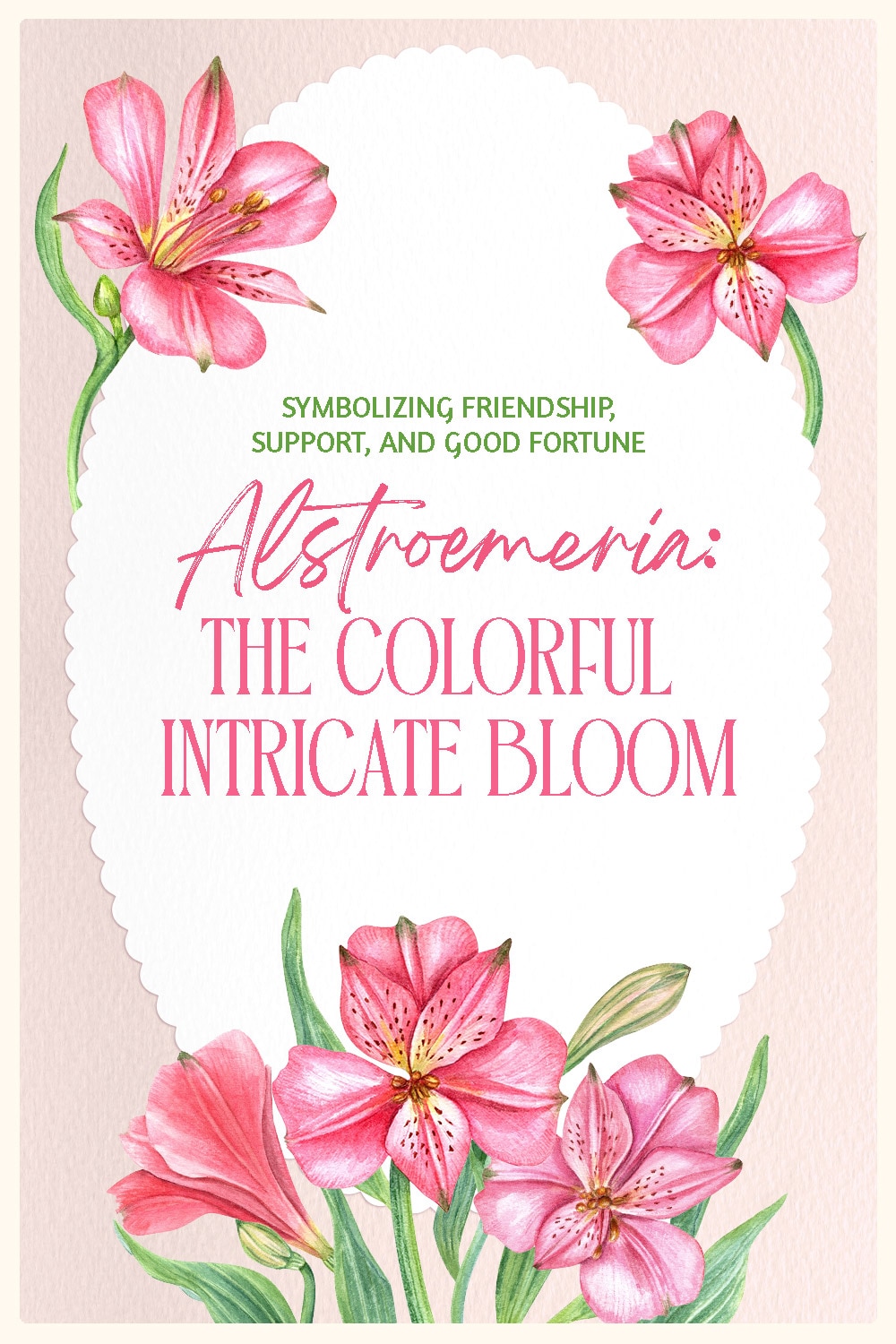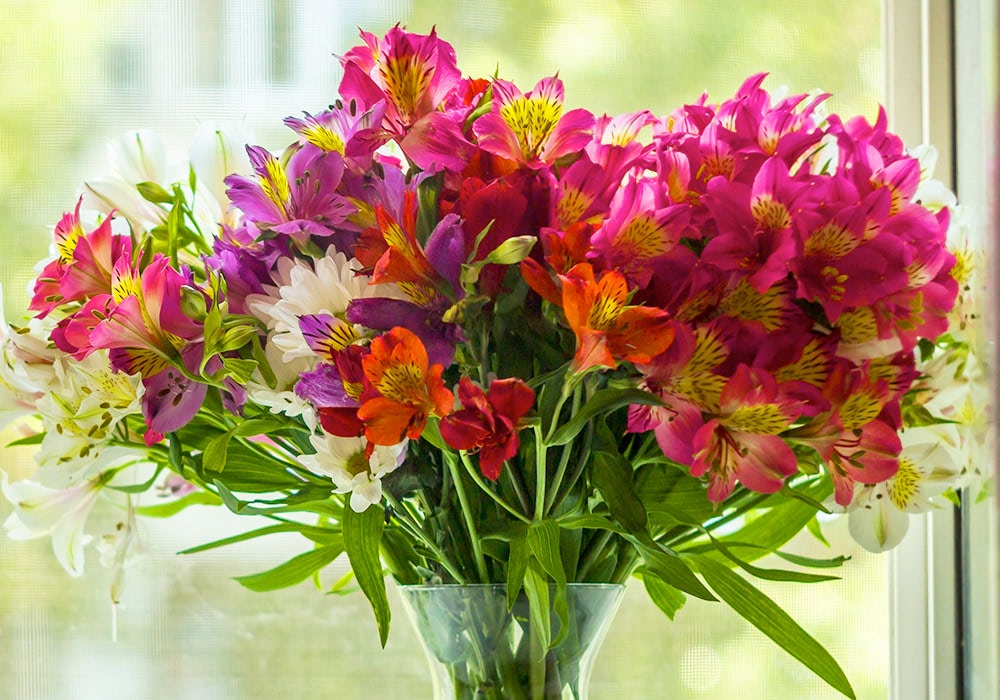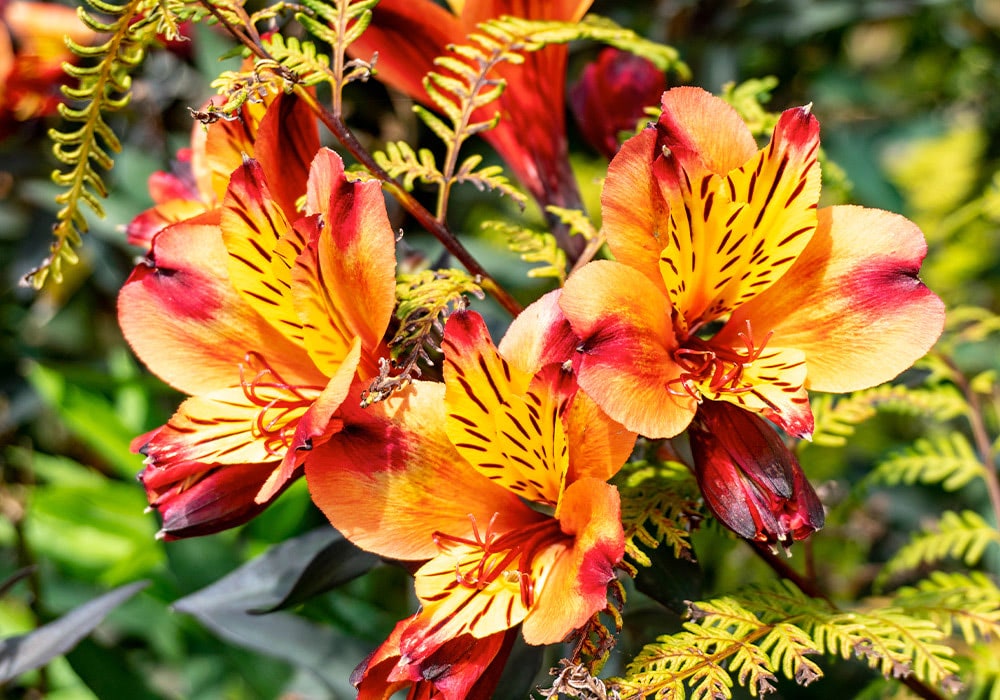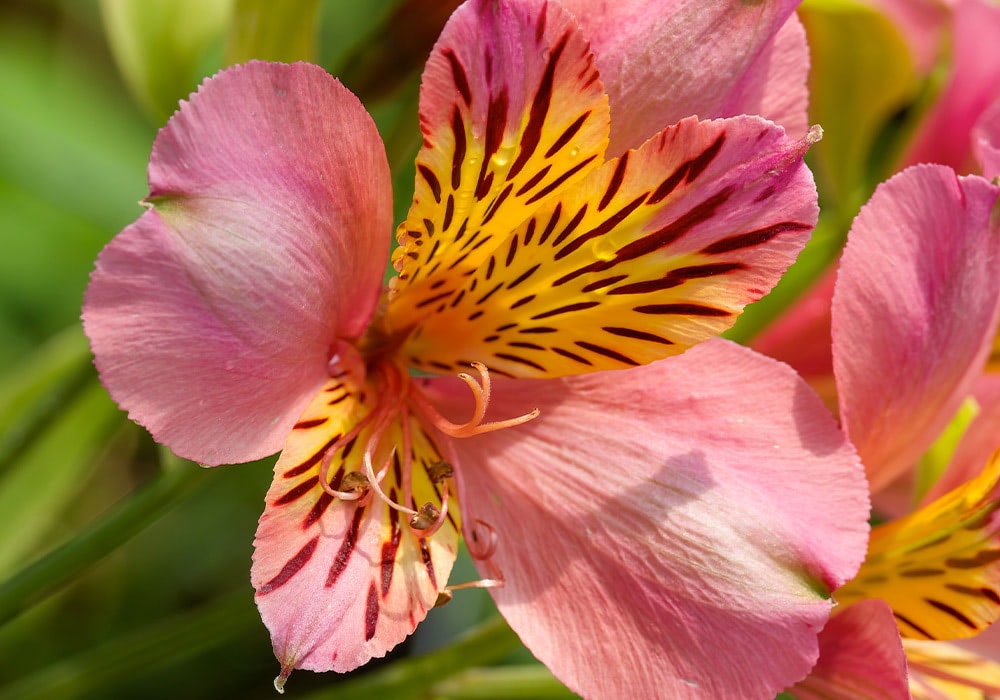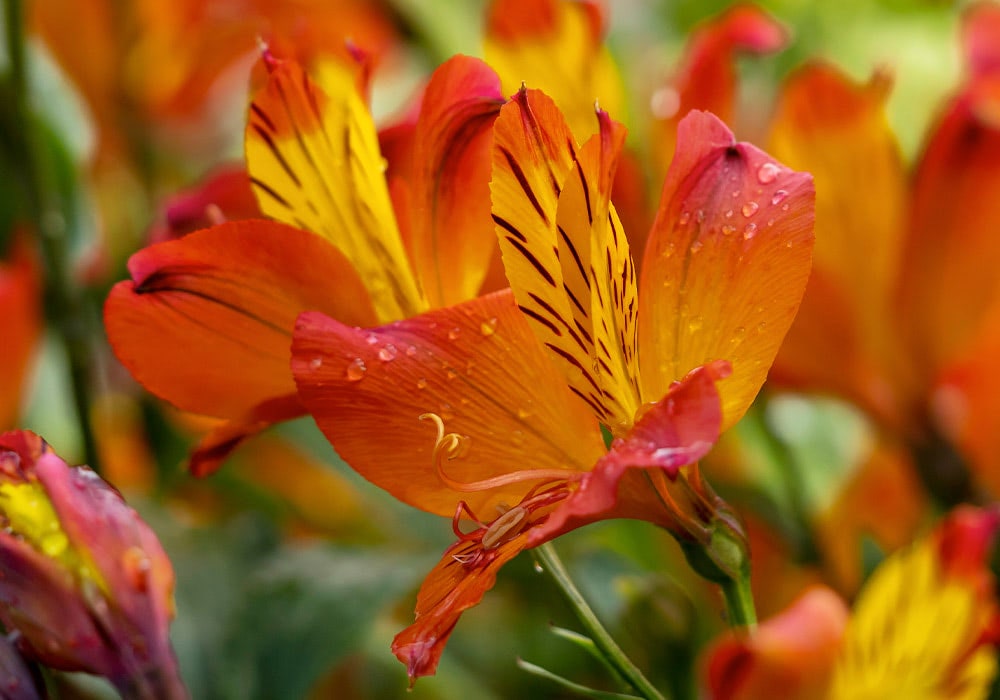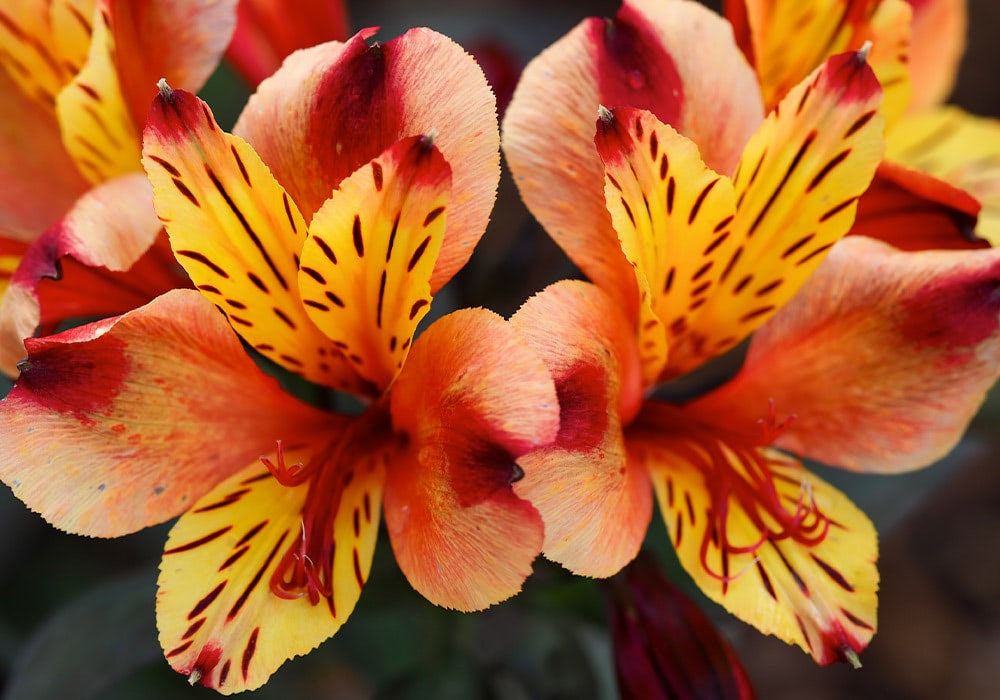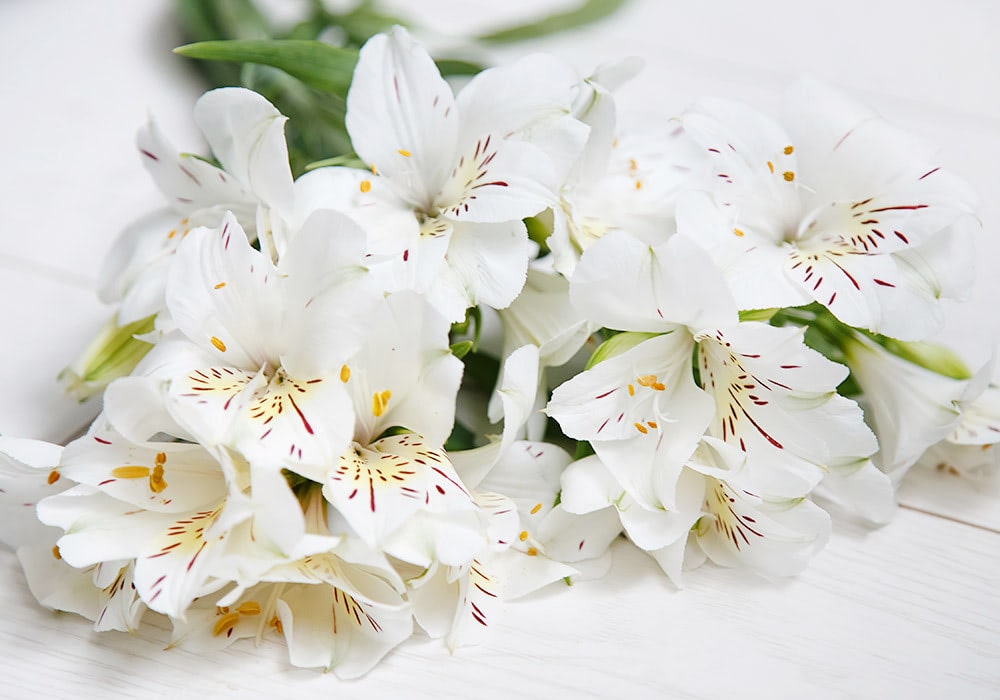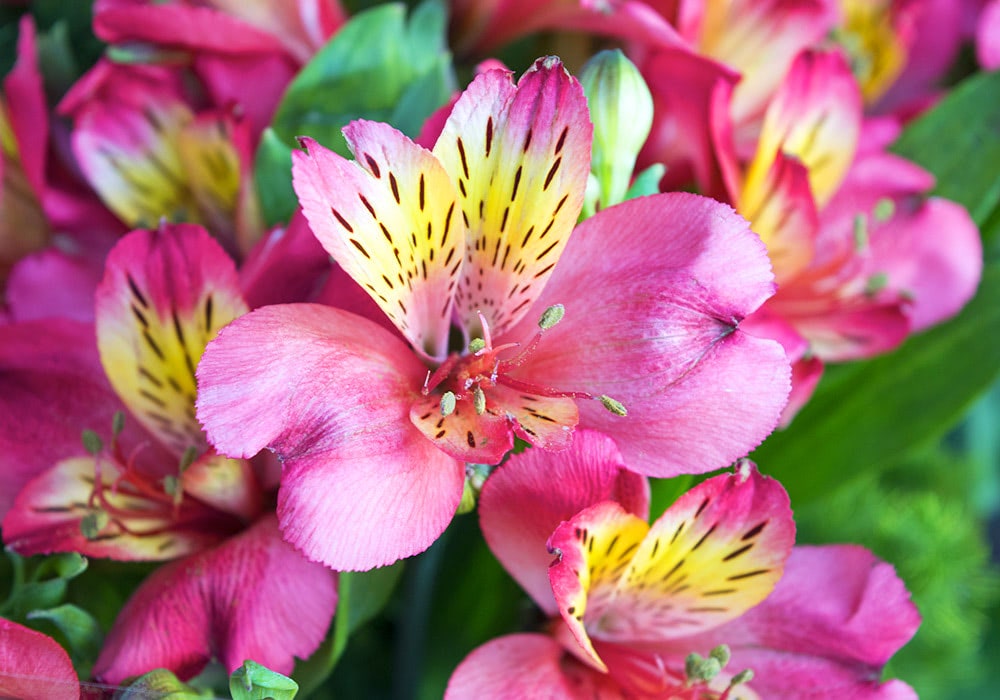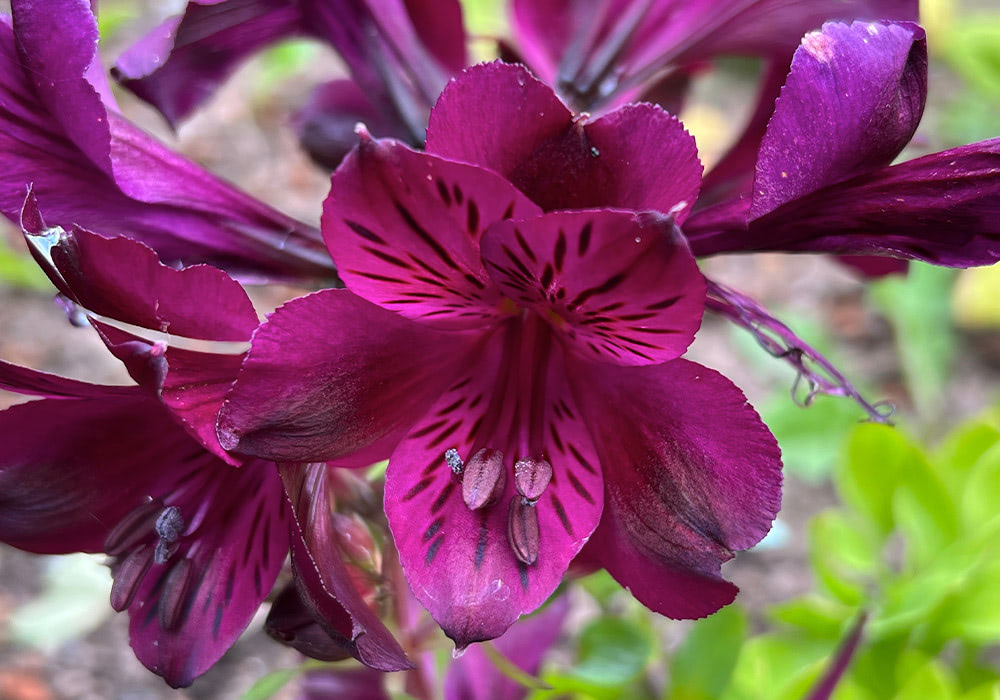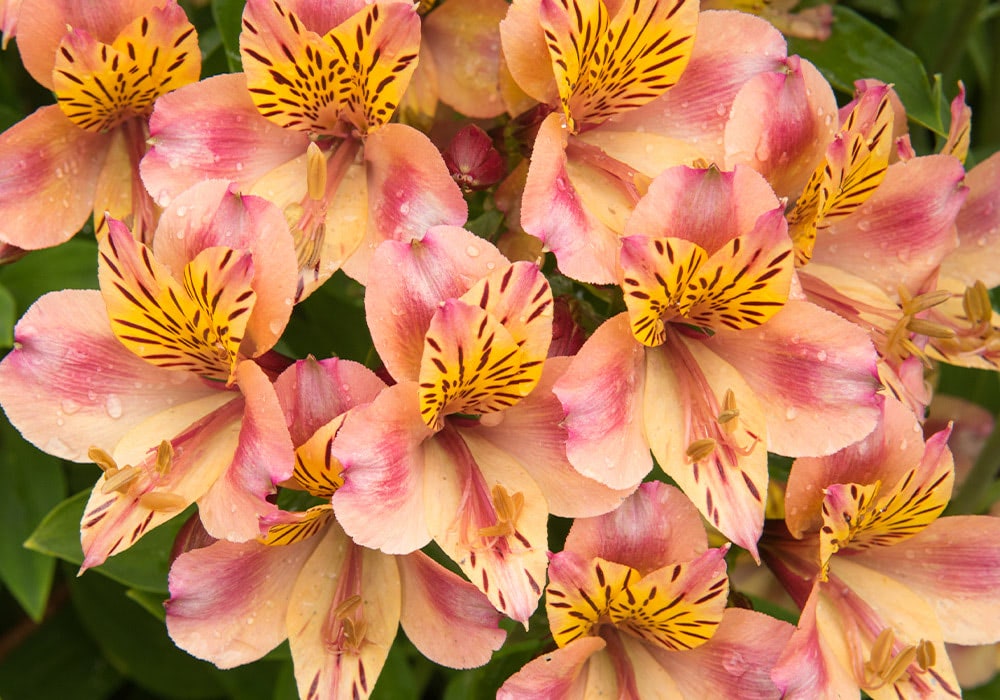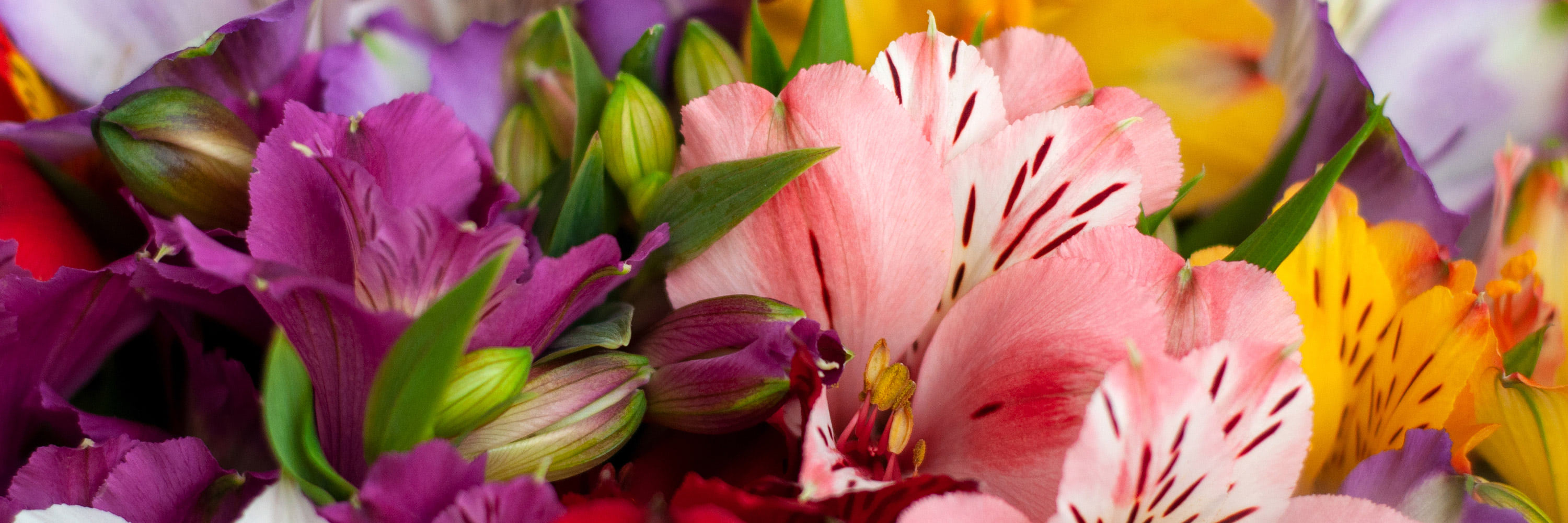
Alstroemeria, affectionately known as the Peruvian Lily, is a sweet and captivating bloom that brings a burst of color and charm to any floral arrangement. With its intricate patterns and vibrant hues, alstroemeria is often used as an accent to add texture and depth to arrangements.

About the Alstroemeria
Alstroemeria flowers were first discovered in the 18th century by Swedish botanist Baron Clas Van Alströmer. Native to the mountains of South America, their seeds were harvested and made their way to Europe, where horticulturists began cultivating and hybridizing new varieties. Today, thanks to centuries of breeding and enhancing their vibrant colors and resilience, alstroemeria adds bursts of color and symbolism to floral arrangements across cultures. A flower with an impressive vase life, alstroemeria is a favorite for long-lasting bouquets and can flourish all year round, furthering its popularity among florists.
Characteristics of Alstroemeria
Alstroemerias bloom in various colors, from white to vibrant pinks and reds to soft yellows and oranges. Notably, alstroemeria with blue or green petals have likely been artificially grown or dyed. These flowers can grow up to three feet tall, with their leaves intriguingly growing upside down - a phenomenon that continues to be a mystery to botanists. Their trumpet-shaped flowers are easily identified by their dark markings, from stripes and speckles to streaks, all converging towards their yellow centers.
Popular Alstroemeria Varieties
Among the 50 species of alstroemeria, these are the 10 most popular:
Alstroemeria Name Meaning
The name "Alstroemeria" is a nod to the Swedish botanist Baron Clas Van Alströmer, who first discovered the flower in the 18th century. Its nicknames, Peruvian Lily and Lily of the Incas, refer to the flowers' native habitats in the mountain regions of Peru, Chile, and Brazil.
Alstroemeria Symbolism
Alstroemeria is a symbol of friendship, mutual support, devotion, achievement, and good fortune. This bloom can also mean honor, majesty, purity, and grace. In the Victorian Era, receiving alstroemeria signified that you were beloved.
Fun Facts About the Alstroemeria
- Alstroemeria has multiple nicknames, including Peruvian Lily, Lily of the Incas, and Parrot Lily.
- Contrary to their nicknames, alstroemeria do not belong to the lily family.
- Alstroemeria are fragrance-free, making them a nice choice for those sensitive to strong scents.
- Alstroemeria flowers are bilaterally symmetrical, meaning they can be divided into mirror-image halves.
- The six petals of an alstroemeria flower are believed to represent empathy, respect, understanding, commitment, humor, and patience.
- Although alstroemeria is non-toxic to dogs and cats, keeping fresh flowers away from furry friends is always best.
Alstroemeria Occasions
Known as the friendship flower, alstroemeria is the perfect gift for friends, whether it's their birthday, a housewarming gift, or a way to show your support during a difficult time. Their bright blooms bring encouragement in "get well soon" bouquets, warmth to baby showers, and comfort in sympathy arrangements. Whether celebrating milestones or simply brightening someone's day, alstroemeria's long-lasting beauty and warm symbolism make it a meaningful choice for any heartfelt moment.
